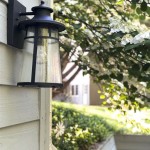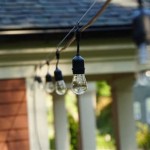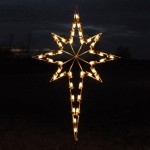What Material Is Best For Outdoor Furniture Covers?
Protecting outdoor furniture from the elements is crucial to extending its lifespan and maintaining its aesthetic appeal. Outdoor furniture covers serve as a barrier against rain, sun, wind, snow, and debris, all of which can contribute to fading, cracking, rusting, and general wear and tear. The key to effective protection lies in selecting the right material for the cover. The optimal choice depends on various factors, including the local climate, the type of furniture being protected, and individual preferences regarding durability, breathability, and cost.
Several materials are commonly used in the construction of outdoor furniture covers, each with its own set of advantages and disadvantages. Understanding these properties is essential for making an informed decision and ensuring that the chosen cover will provide adequate protection for the specific needs and conditions.
Polyester: A Versatile and Cost-Effective Option
Polyester is a synthetic fabric widely recognized for its versatility and affordability. It is a popular choice for outdoor furniture covers due to its inherent water resistance, durability, and resistance to stretching and shrinking. Polyester is also relatively lightweight, making it easy to handle and store. Furthermore, it is resistant to mildew and many common stains, contributing to its long-term maintainability.
However, not all polyester fabrics are created equal. The denier, a unit of measure indicating the fiber thickness, plays a significant role in determining the fabric's strength and waterproofness. Higher denier polyester fabrics are generally more durable and water-resistant. A polyester cover with a waterproof coating, such as polyurethane (PU) or polyvinyl chloride (PVC), offers enhanced protection against heavy rain and snow. These coatings create a waterproof barrier, preventing water from penetrating the fabric.
While polyester offers good water resistance, it is not entirely waterproof unless treated with a waterproof coating. Over time, the coating can degrade, reducing its effectiveness. Additionally, polyester is not as breathable as some other materials, which can lead to condensation buildup underneath the cover, potentially promoting mold and mildew growth if not properly managed. Air vents incorporated into the cover design can help mitigate this issue by allowing air circulation.
The UV resistance of polyester is also a factor to consider. Prolonged exposure to sunlight can cause fading and weakening of the fabric. Look for polyester covers that are treated with UV inhibitors to enhance their resistance to sun damage. The color of the fabric also influences its UV resistance; darker colors tend to fade more quickly than lighter colors.
Vinyl: A Heavy-Duty Waterproof Solution
Vinyl, specifically polyvinyl chloride (PVC), is a plastic polymer known for its exceptional waterproof properties. Outdoor furniture covers made of vinyl provide a robust barrier against rain, snow, and other forms of moisture. Vinyl is also highly durable and resistant to abrasions, making it suitable for use in harsh weather conditions. Its non-porous nature prevents water from seeping through, ensuring that the furniture underneath remains completely dry.
However, vinyl's waterproof nature also means that it is not breathable. This lack of breathability can lead to significant condensation buildup inside the cover, potentially causing mold and mildew growth. To address this issue, many vinyl furniture covers incorporate ventilation systems, such as air vents or mesh panels, to facilitate air circulation and reduce condensation build-up. Without proper ventilation, the trapped moisture can also damage the furniture itself.
Vinyl can become stiff and brittle in cold temperatures, making it more prone to cracking. This can be a significant drawback in regions with harsh winters. Furthermore, vinyl is not environmentally friendly as it is not biodegradable and can release harmful chemicals during its production and disposal. The weight of vinyl is also considerably higher than polyester, making it less convenient to handle and store.
The UV resistance of vinyl is another important factor. Prolonged exposure to sunlight can cause vinyl to become brittle and crack. Look for vinyl covers that are treated with UV inhibitors to minimize the damaging effects of the sun. Proper maintenance, such as regular cleaning, can also help extend the lifespan of a vinyl furniture cover.
Canvas: A Breathable and Durable Natural Fabric
Canvas is a durable woven fabric typically made from cotton or linen, although synthetic versions are also available. It offers a good balance of breathability and water resistance, making it a popular choice for outdoor furniture covers. Canvas is naturally breathable, allowing air to circulate and preventing condensation buildup. This is particularly beneficial in humid climates where mold and mildew growth are a concern.
Cotton canvas is typically treated with a water-repellent finish to enhance its resistance to rain and moisture. However, it is not entirely waterproof and can become saturated in heavy rain. Synthetic canvas, such as acrylic canvas (often sold under brand names like Sunbrella), offers superior water resistance and UV resistance compared to cotton canvas. Acrylic canvas is also more resistant to fading and mildew.
Canvas is a relatively heavy fabric, which can make it more difficult to handle and store compared to polyester. However, its weight also contributes to its durability and ability to withstand strong winds. Canvas is also more susceptible to shrinking and stretching than synthetic fabrics. Proper care and maintenance, such as regular cleaning and storage in a dry place, are essential to prolong its lifespan.
The cost of canvas covers is generally higher than that of polyester covers, especially for high-quality acrylic canvas. However, the increased durability, breathability, and UV resistance of canvas can make it a worthwhile investment in the long run. Canvas is also a more sustainable option than vinyl, as it is made from natural fibers (in the case of cotton or linen canvas) and is biodegradable.
Considerations Beyond Material Type
Beyond the primary material, other factors contribute to the overall effectiveness and longevity of outdoor furniture covers. The quality of the stitching, the presence of reinforced seams and hems, and the design of the cover all play a role in its performance.
Reinforced seams and hems add strength and durability to the cover, preventing it from tearing or unraveling under stress. High-quality stitching ensures that the seams are securely joined and can withstand repeated use. Look for covers with double-stitched or even triple-stitched seams for added durability.
The design of the cover should be tailored to the specific furniture it is intended to protect. A well-fitting cover will provide better protection from the elements and will be less likely to blow away in strong winds. Features such as elastic hems, drawstrings, buckles, and tie-downs can help secure the cover in place and prevent it from shifting or billowing.
Ventilation is also a crucial design element. Covers with air vents or mesh panels allow air to circulate, preventing condensation buildup and reducing the risk of mold and mildew growth. The placement and size of the vents should be carefully considered to ensure adequate ventilation without compromising the cover's ability to protect against rain and debris.
Finally, ease of use is an important consideration. A cover that is easy to put on and take off will be more likely to be used regularly, maximizing its protective benefits. Features such as handles and zippers can facilitate the process of covering and uncovering the furniture. The storage bag or pouch included with the cover should be durable and easy to use for compact storage when the cover is not in use.
Ultimately, the best material for outdoor furniture covers depends on a combination of factors, including climate, budget, and personal preferences. Each material offers a unique balance of benefits and drawbacks, and the optimal choice will vary depending on the specific circumstances. Thorough research and careful consideration of these factors will ensure that the chosen cover provides effective and long-lasting protection for outdoor furniture.

Best Material For Outdoor Furniture Covers Oakville Home Leisure

The Best Patio Furniture Covers Cover Blog

Best Fabric For Outdoor Furniture And Cushions

7 Best Outdoor Furniture Covers For All Weather Protection
The 14 Best Outdoor Furniture Covers Of 2024

Tips For Using Your Outdoor Furniture Cover The Blog

Best Patio Furniture Covers 2024 Outdoor

Best Patio Cover Materials Creative Covers Inc

Eight Best Outdoor Furniture Covers For Winter Bbc Gardeners World

4 Reasons Why You Should Cover Your Patio Furniture Sunnydaze Decor
Related Posts







